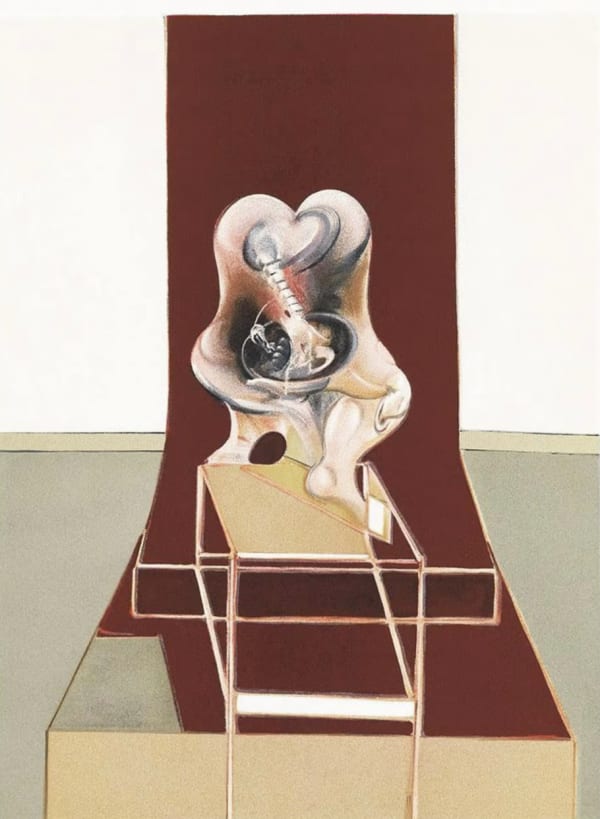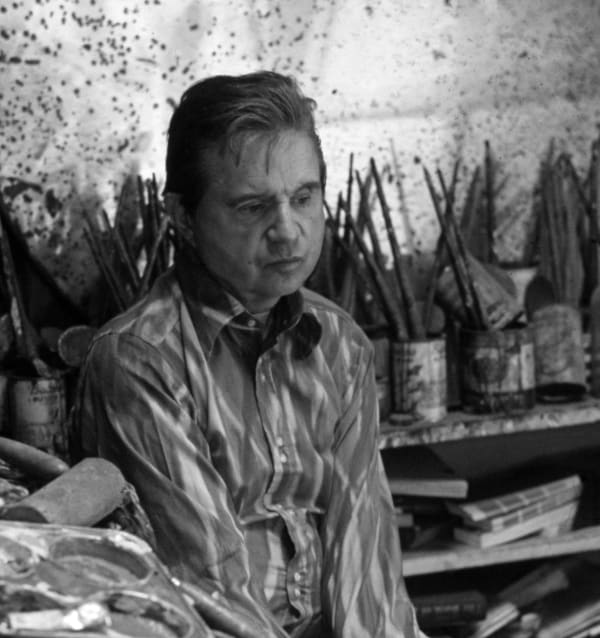George Dyer was Francis Bacon’s most significant muse and one of the defining figures in his personal and artistic life. Born in London’s East End in 1933, Dyer grew up in a working-class family surrounded by crime and instability, spending much of his youth between petty theft and brief prison sentences. He met Bacon in 1963, a meeting often mythologised as beginning with an attempted burglary, though the truth is likely more ordinary. Dyer, in his early thirties, was instantly drawn to Bacon’s confidence and sophistication, while Bacon was captivated by Dyer’s physicality and vulnerability.
 Triptych - In Memory of George Dyer (left panel), 1975Lithograph in colours, on wove paper, signed in felt-tip pen. Edition of 200.86cm x 61cm©The Estate of Francis Bacon
Triptych - In Memory of George Dyer (left panel), 1975Lithograph in colours, on wove paper, signed in felt-tip pen. Edition of 200.86cm x 61cm©The Estate of Francis Bacon


